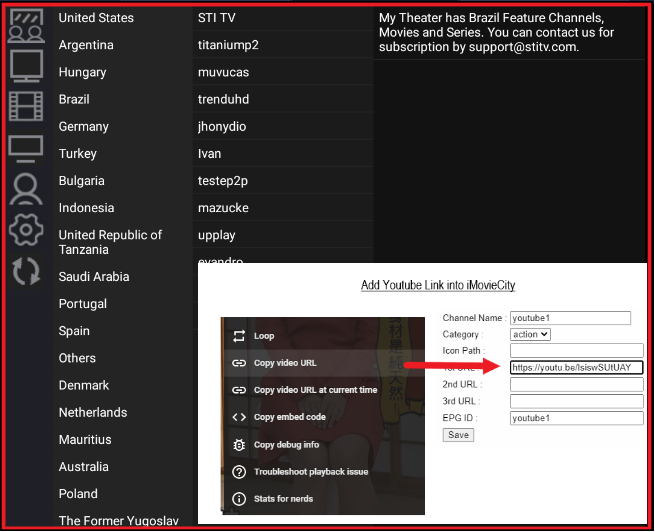Features
 Video Content Management
Video Content Management For International Companies, Chain Store Restaurants / Hotels
For International Companies, Chain Store Restaurants / Hotels Let branches easily manage video metadata and users in Cloud
Let branches easily manage video metadata and users in Cloud Support Live TV, Video on Demand and Series
Support Live TV, Video on Demand and Series
 Only need a tiny VPS for content management
Only need a tiny VPS for content management iMovieCity App for users
iMovieCity App for users Support Youtube, HTTP and HLS Links
Support Youtube, HTTP and HLS Links
Create Branch Panel:
1. Sign Up and Login iMoviecity.
2. Add Youtube Links.
3. Input Branch information in Setting menu.
Watch channels, movies and series:
1. Download iMovieCity app into android devices.
2. Open App to check your branch information in your country list.
3. Play your channel list as right app screenshot.





